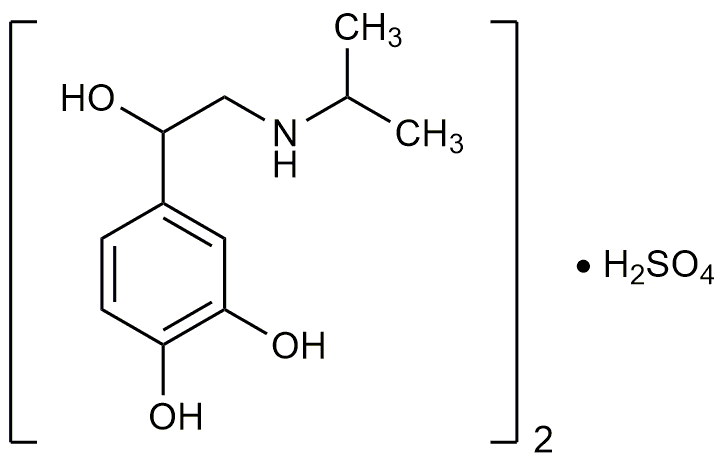|
Isoproterenol sulfate is widely utilized in research focused on:
- Cardiovascular Research: This compound is often used to study heart function and the effects of beta-adrenergic stimulation, helping researchers understand conditions like heart failure and arrhythmias.
- Pharmacological Studies: It serves as a model compound in pharmacology to evaluate the efficacy of beta-agonists, providing insights into drug interactions and therapeutic effects.
- Respiratory Treatments: Isoproterenol sulfate is applied in developing treatments for asthma and chronic obstructive pulmonary disease (COPD), as it helps in bronchodilation, improving airflow in patients.
- Clinical Diagnostics: The compound is used in diagnostic tests to assess cardiovascular responses, aiding in the evaluation of autonomic nervous system function.
- Research on Drug Formulations: It is utilized in formulating and testing new drug delivery systems, enhancing the stability and bioavailability of beta-agonist medications.
General Information
Properties
Safety and Regulations
Applications
Isoproterenol sulfate is widely utilized in research focused on:
- Cardiovascular Research: This compound is often used to study heart function and the effects of beta-adrenergic stimulation, helping researchers understand conditions like heart failure and arrhythmias.
- Pharmacological Studies: It serves as a model compound in pharmacology to evaluate the efficacy of beta-agonists, providing insights into drug interactions and therapeutic effects.
- Respiratory Treatments: Isoproterenol sulfate is applied in developing treatments for asthma and chronic obstructive pulmonary disease (COPD), as it helps in bronchodilation, improving airflow in patients.
- Clinical Diagnostics: The compound is used in diagnostic tests to assess cardiovascular responses, aiding in the evaluation of autonomic nervous system function.
- Research on Drug Formulations: It is utilized in formulating and testing new drug delivery systems, enhancing the stability and bioavailability of beta-agonist medications.
Documents
Safety Data Sheets (SDS)
The SDS provides comprehensive safety information on handling, storage, and disposal of the product.
Product Specification (PS)
The PS provides a comprehensive breakdown of the product’s properties, including chemical composition, physical state, purity, and storage requirements. It also details acceptable quality ranges and the product's intended applications.
Certificates of Analysis (COA)
Search for Certificates of Analysis (COA) by entering the products Lot Number. Lot and Batch Numbers can be found on a product’s label following the words ‘Lot’ or ‘Batch’.
Numéro de catalogue
Numéro de lot/série
Certificates Of Origin (COO)
This COO confirms the country where the product was manufactured, and also details the materials and components used in it and whether it is derived from natural, synthetic, or other specific sources. This certificate may be required for customs, trade, and regulatory compliance.
Numéro de catalogue
Numéro de lot/série
Safety Data Sheets (SDS)
The SDS provides comprehensive safety information on handling, storage, and disposal of the product.
DownloadProduct Specification (PS)
The PS provides a comprehensive breakdown of the product’s properties, including chemical composition, physical state, purity, and storage requirements. It also details acceptable quality ranges and the product's intended applications.
DownloadCertificates of Analysis (COA)
Search for Certificates of Analysis (COA) by entering the products Lot Number. Lot and Batch Numbers can be found on a product’s label following the words ‘Lot’ or ‘Batch’.
Numéro de catalogue
Numéro de lot/série
Certificates Of Origin (COO)
This COO confirms the country where the product was manufactured, and also details the materials and components used in it and whether it is derived from natural, synthetic, or other specific sources. This certificate may be required for customs, trade, and regulatory compliance.


